The Yakuza Series: Where to Start?
The Yakuza series recently celebrated its fifteenth anniversary, and while the majority of the games have been localized for western audiences, the popularity that the series has earned outside Japan is recent. With eight mainline games having rereleases, Kiwami editions, and numerous spinoffs, it can be hard for casual observers to keep track of what games are on which platforms and which entries serve as good starting points. While the Yakuza games all share common characters and story elements that reemerge, there are plenty of different places to jump into this prolific series of RPGs. Thus several of the staff members at RPGamer have put together their thoughts on the games and the different starting points for first-time players.
By Joshua Carpenter, David McBurney, and Sam Wachter
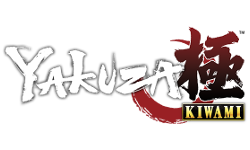
Yakuza available on: PlayStation 2, Wii U (Japan only), PlayStation 3 (Japan only)
Yakuza Kiwami available on: PC, PlayStation 4, Xbox One
The original Yakuza on PlayStation 2 is a diamond in the rough — while it had a stiff combat system and questionable English voice work (filled with named celebrities), there was a glimmer in how fantastic the storytelling and world-building were. This is the original Kazuma Kiryu story, which introduced the stoic yet kind yakuza who has been expelled from his clan and falls into a mystery behind the crime he did not commit and the best friend who framed him. Years later, the game was remastered for modern platforms in the Kiwami version, with new features such as “Majima… Everywhere!” where Majima, Kiryu’s friend(?) can literally pop out of nowhere and demand a battle that gives Kiryu new skills if he wins. Kiwami also offered new story elements, touched-up graphics, and the ability to have the Japanese voice track, which was not present in the original release.
In terms of a starting point, Yakuza Kiwami is the best place to start. It not only offers a revamped and revised package of the original game, but it also refines the combat, graphics, and adds new additional gameplay elements that refresh the original game in a much-needed way. If you are curious about the Vanilla Version on PlayStation 2, we recommend avoiding it, for it and the game’s precious English voice acting have not aged well in the slightest.
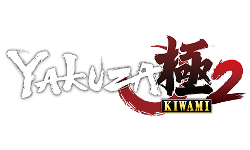
Yakuza 2 available on: PlayStation 2, Wii U (Japan only), PlayStation 3 (Japan only)
Yakuza Kiwami 2 available on: PC, PlayStation 4, Xbox One
Following on the coattails of the original Yakuza came a direct sequel in 2006, and one that surpassed the original game in a lot of ways. Yakuza 2 has a lot of upgrades from the original game, such as improvements to the brawler combat system, better graphics, and more epic boss battles, including Kazuma Kiryu punching a tiger. It also has arguably the best story in the series as it offers tons of twists, turns, and the unexpected from start to finish. To quote my original review “The story is a pure adrenaline rush and finding out who’s involved is a surprise all its own.” The game was repolished and packaged for modern consoles in 2017, and it takes an already amazing game and amplifies it to new and refreshing heights. Most notably, it also includes a special storyline for fan favourite character, Goro Majima. What is not to love?
As a starting point, Yakuza 2 is not recommended as it is a direct sequel to the first game. Understanding plot points from the first game are imperative to understanding the story going forward, particularly the state of disarray that the Tojo Clan is in at this point. It is an amazing game, and it would be disadvantageous to play it on PlayStation 2 given the numerous quality-of-life improvements included in Kiwami 2. If you only have access to the PS2 version, go for it, but if you own a modern console, stick with Kiwami 2, as it is head-and-shoulders the best version of this tale.

Available on: PC, PlayStation 3, PlayStation 4, Xbox One
Yakuza 3 was the first Yakuza game in HD and takes Kiryu to the tropical climes of Okinawa as he has left the yakuza behind to run an orphanage. Of course, just when Kiryu thought he was out, they pulled him back in. A mysterious man who bears a striking resemblance to his deceased foster father, Kazama, has turned up and is involved in a plan to buy the orphanage and turn the land into a beachfront resort. Now Kiryu has to battle the local yakuza trying to take the orphanage by force while also learning what relation the mysterious man has to Kazama.
Now that the first two games have been remade with “Kiwami” versions, Yakuza 3 is the least refined of the mainline Yakuza games as the remaster changes were mostly limited to allowing the games to function on modern platforms albeit with better framerates and load times. However, Yakuza 3 did receive new content in the Yakuza Remastered Collection as the cabaret clubs and games (such as mahjong) that were not included in the original PlayStation 3 release have been localized and added in this modern update.
Going beyond the particularities of the different releases, Yakuza 3 has one of the most heartwarming stories in the series, with Kiryu running an orphanage to pay it forward after his childhood spent as an orphan. Okinawa makes for an interesting new locale to explore, and the game conveys how unique the island is in comparison to the rest of Japan.
Yakuza 3 isn’t the worst place to jump into the series from a narrative perspective. It’s more self-contained than the games that precede and follow, though the plot beats involving Kazama won’t have the same impact without playing the earlier games in the franchise. However, given the ease of accessing all the mainline games at this point, there isn’t a reason to pick this as a starting point anymore.
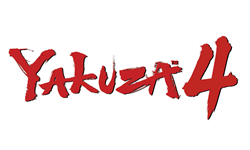
Available on: PC, PlayStation 3, PlayStation 4, Xbox One
After dipping a toe into the HD waters, Ryu ga Gotoku Studio went all out with Yakuza 4. While the game doesn’t have the variety of environs that some of the other entries boast — gameplay is firmly centered in Kamurocho this time — it instead takes a unique tack with its storytelling as Kiryu takes a bit of a backseat and three new characters enter center stage. The story itself centers around a 1985 event when one man single-handedly murdered eighteen members of a rival yakuza clan to the Tojo. Each of the four main characters — Shun Akiyama, Masayoshi Tanimura, Taiga Saejima, and, of course, Kazuma Kiryu — have their own section of the game which slowly tie together before the four are united to solve the mystery behind the murders.
As there are four different leads, combat also gets a new look as each of the different protagonists has a unique feel. Saejima, as a muscular hulk, is slow but incredibly powerful and can pick up motorcycles and other heavy objects to bash the multitude of thugs that frequent the streets of Kamurocho while Tanimura is much less powerful but nevertheless quick and nimble, using counters to take down foes. Yakuza 4 is a meaty game with plenty of content to dig into, and the changing styles as players progress through the story keep the brawling combat from becoming too repetitive.
Yakuza 4 has a great cast — Akiyama and Saejima have become series regulars — and discovering the overarching story of the mystery behind the murders will keep players gripped to the action. Because the action is completely centered in Kamurocho, Yakuza 4 has the best fleshed-out version of the city with tons of side stories to do and plenty of nooks and crannies to find and explore.
Since there wasn’t any content cut from the localized PlayStation 3 version, there is little difference between the original versions and the remasters on modern platforms. Due to the original actor’s legal troubles, Tanimura has been remodeled and there is a new voice actor for the remaster. Otherwise, players will only find some slightly upgraded visuals and slightly reduced load times that separate the original from the Remastered Collection.
Yakuza 4 is a great game, but it’s a pretty terrible place to start for newcomers to the series. The story ties heavily into plot threads and characters from earlier games, so Yakuza neophytes should look to some of the other more accessible options.

Available on: PC, PlayStation 3, PlayStation 4, Xbox One
With the series adding new characters and additional branches within the Yakuza world, Yakuza 5 is an interesting take for the series. Yakuza 5 has players following five protagonists, each connected by one main plot thread. Each of the protagonists is in different parts of Japan, as players will get the opportunity to explore Sapporo, Osaka, Fukuoka, and Nagoya. At this point in the series, Kiryu is desperate to remove himself from the Tojo Clan and is attempting to support Haruka, his adoptive daughter’s idol career in the form of becoming a taxi driver. The truce between the Tojo Clan and the Omi Alliance has disintegrated, and with outright war just around the corner, our heroes get dragged into saving the clan once again. While favourites Taiga and Akiyama appear in 5, we are also introduced to Haruka as a playable character, and a washed-up baseball player turned journalist named Tatsuo Shinada, who follows a lead that gets him entangled with the Tojo Clan and Omi Alliance.
Yakuza 5 has a lot to unpack given each character’s connection to the overarching story that comes from following Yakuza 4. At this point, both the Tojo Clan and the Omi Alliance stories have exploded into something that began brewing all the way back to the original Yakuza. Each character offers their own unique playstyle, with Haruka’s story offering intense dance battles as she works her way up to idol stardom. There are so many sidequests to engage in, and each new area to explore is alive and diverse.
In terms of a starting point, do not under any circumstances start with Yakuza 5. The game is built off all the previous storylines converging to this point and honestly, it would be confusing to a newcomer to start here and understand the big picture and larger stakes that have hit this point. While originally released on PlayStation 3, there is no reason to go back to this version if you own a modern console, as 5 was re-released in a bundle with upgraded versions of 3 and 4, though once again there are few differences between the original and remaster.

Available on : PC, PlayStation 3 (Japan only), PlayStation 4, Xbox One
After the continuity-dense and sprawling Yakuza 5, Sega seemed wary of how unapproachable Yakuza was becoming as a franchise, so they dialed back in scope and time, creating this prequel set in the late ’80s. Yakuza 0 introduced new style-switching combat and centered on the early careers of series protagonist Kazuma Kiryu and fan-favorite Goro Majima.
Yakuza 0’s plot centers its setting, focusing on a land grab for the dwindling vacant areas within the series’ usual core haunt of Kamurocho. While the plot is clearly full of knowing winks for returning players, the writers used its prequel status to make a more approachable game, starring characters who can reasonably be assumed to not know the byzantine machinations of a dozen factions. In alternating chapters, the game tells the connected stories of Kiryu and Majima as both find themselves on the outs with the Tojo Clan and investigate the conflict over the unimpressively named Empty Lot, a plot of land everyone with real estate investments in Kamurocho wants to lay their hands on.
Combat got a bit of a rework in this game, with both protagonists having three primary fighting styles, but despite this, it hasn’t become any more complicated as each style is still composed of basic attacks and a combo ender. Tied to this is a progression system tying into the monetary excess of Japan’s ’80s economic bubble that makes skilled play worthwhile by rewarding money based on fight performance and using money as the direct means to improve styles and stats. While not terribly complex, it manages to be approachable and interesting enough for both new and returning players.
In a franchise known as much for its side content as anything else, Yakuza 0 might actually be the most stuffed to the gills with mini-games, sidequests, and other distractions. With disco dancing, real estate investments, and all manner of sports mini-games, this game introduces and inherits a lot of optional content. Between engine changes and thematic cuts, the series has rarely had as much side content before or since. Therefore, players who want to experience a little bit of everything the series has been are well served.
Yakuza 0 is available basically everywhere the series is and is frequently quite cheap physically and digitally. It’s fair to say that much of the series cult resurgence is owed to this game, and it was many fans’ starting point. While it definitely has references that may go over new players’ heads, it represents one of the better starting points for new players.
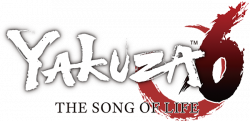
Available on: PC, PlayStation 4, Xbox One
Being the first game made exclusively for the PS4, Ryu ga Gotoku Studio decided to craft a swan song for longtime series protagonist Kazuma Kiryu and to upgrade the game’s engine to eliminate battle loading and create a more cohesive game. While the game is certainly worthwhile, it should come as no surprise that it’s not a great first game to play.
Yakuza 6 sees Kiryu fresh out of prison to find that in the time he’s been gone his adoptive daughter has been in a hit and run incident and had a baby. Now taking care of the infant, Kiryu goes in search of the perpetrators and the father. The plot of Yakuza 6 makes extensive references to many of the prior games although it reserves its strongest ties for its immediate predecessors 0 and Kiwami, tying the three games into a loose, slightly befuddling trilogy. It’s a suitably bombastic finale for Kiryu as the series lead, and it does its level best to try to loop new players in but it just can’t manage it. Also, many of the game’s emotional throughlines relies on the player already caring about these characters. For these reasons, it’s a fitting conclusion but a terrible beginning.
Gameplay-wise, Yakuza 6 makes big changes, the stance system from 0 and Kiwami is gone, and for the first time since Yakuza 3, there is only one playable character. While these options open to the player may seem a little smaller, the game combats this by leaning into a more chaotic style. Combat is no longer separate from world exploration as enemies can start a fight without any transition, and fights can break objects and generally collide with the new physics system. It manages to keep things interesting even with the reduced complexity.
Outside of combat, the amount of side content has noticeably decreased, several mini-games were cut in the transition to the new engine, and while some were replaced, the overall experience definitely feels thinner. On the bright side, the actual exploration is much more interesting as many of the invisible walls that seal off-side alleys are gone, lending the returning Kamurocho and the new quieter seaside city of Onomichi a stronger sense of place. After 6 games and a remake, there’s something to be said for finally being able to hop waist-high fences.
Apart from digital tourism, it’s hard to recommend Yakuza 6 as anyone’s first entry, but it was never supposed to be. Those interested in playing Yakuza 6 can check it out on PS4, Xbox One, and PC.

Available on: PC, PlayStation 4, PlayStation 5, Xbox One, Xbox Series X|S
The grand rebirth of Yakuza was a long time coming. Initially announced years prior to anything about it being shown except its protagonist, Yakuza: Like a Dragon was surprisingly revealed to be a turn-based RPG, severing ties to the series traditional combat as much as it did most of its more continuity dense aspects.
Yakuza: Like a Dragon introduces players to new protagonist Kasuga Ichiban, a Dragon Quest obsessed low-level enforcer for a no-name branch of the Tojo Clan who ends up on an eighteen-year sabbatical in jail, taking the punishment for a murder seemingly committed by his superior. Upon reentering the life of a free citizen, Ichiban finds that the Tojo Clan is, for all intents and purposes, wiped out and none of his former associates want anything to do with him, loyalty or no. Ichiban is turfed out of Kamurocho and sent to Yokohama where he begins investigating the case of what happened to the Tojo Clan and his own direct associates while he was in a cell.
More shocking than the change of protagonist was the total reworking of combat, now operating in a turn-based style with party members and a job system. While the combat retains some button prompts similar to the Heat actions in prior games, the look and feel is deliberately reminiscent of, again, a modern Dragon Quest. Players who have been mourning the death of big-budget turn-based RPGs, this one’s for you, and the attempt to add traditional RPG classes and magic to this modern setting produces some suitably surreal results that help it forge an identity unique from prior games and the DQ games it is so lovingly paying homage to.
Yakuza: Like a Dragon was made as a starting point for new players, and while it hasn’t abandoned the old continuity, it certainly isn’t about the old characters anymore. Between all the sweeping changes — including an English dub in addition to the original Japanese voice acting — it is a game that’s approachable and definitely worth playing on its own merits, and it doesn’t hurt that it’s out on basically everything that can reasonably technically support it. It represents a high point in the series and an excellent starting point for new players.
Localized Spin-off Titles
Available on: PlayStation 3
Yakuza: Dead Souls is an oddball of a game. Coming out during the “zombie-craze” of 2011-2012, this game is a weird reimagining of Kazuma Kiryu’s Kamurocho… if it had been infested by murderous zombies. The story in this game is hilarious and ridiculous, making straight references to popular apocalypse films such as Evil Dead, to Majima believing he is in fact a zombie when really, he was just bitten by one with dentures. The narrative elements are the sole positives that come with this game, as it sports janky camera angles, terrible gunplay (no seriously why is there two kinds of gunplay in a Yakuza game?), limited exploration, and stupid forced mini-games that are nothing more than an exercise in frustration.
Suffice to say, this entry is only appropriate for hardcore fans after consuming the rest of the series as there are some entertaining moments among the frustrating combat, but knowledge of the series characters and plotlines is a must for this entry. If you are curious about Dead Souls, try to get it on the cheap, because it was not even worth the price tag of $60 when it released back in 2012. Just be prepared for hours of terrible gunplay and bad level design.
Fist of the North Star: Lost Paradise
Available on: PlayStation 4
An oddity by any standard, Fist of the North Star: Lost Paradise doesn’t have the Yakuza branding in English, but any fan could identify it as a spin-off within two minutes of booting it up. While one might assume that the licensed nature of the game would make it a decent start for new players, this adaptation of Tetsuo Hara and Buronson’s seminal shonen manga is somehow so brimming with Yakuza in-jokes it’s hard to explain the appeal to someone who doesn’t get them.
The plot here is a what-if sort of branch off of Fist of the North Star, protagonist Kenshiro is searching the nuclear wasteland of the post-apocalypse for his lost love Yuria, but he finds out that she may have been seen in a city called Eden and treks off to investigate. Upon getting there, a bizarre amalgamation of canonical Fist of the North Star material and Yakuza tomfoolery takes place. It’s a very odd fit but both franchises are tonally quite similar with their shared focus on often stoic, mountain of a man protagonists who are as kind as the world will let them be running into vast criminal groups and punching them a lot. It’s not exactly as complex a tale as a mainline game though, married as it is to hit the major beats of the manga while in a new Yakuza-like setting. The real appeal here is that every character is voiced (in Japanese) by the voice of a major Yakuza character who is roughly an analog to whatever FotNS character they voice here. Suffice to say if the concept “Goro Majima as Jagi” doesn’t cause a spark of recognition and amusement, the game’s dialog and the plot will have limited appeal.
Gameplay-wise, what’s here is actually an interesting change of pace. In keeping with the manga’s concept that anyone Ken punches is liable to explode, the game is prone to much larger brawls, so much that the game actually moved back into the engine from Yakuza 0 to support it. Every attack is a lovingly rendered homage to something Kenhiro does in the manga and in keeping with that you can do things like jump kicks and ground pounds that the series has never offered as attacks before or since. It’s a refreshing change of pace for long-time fans at least, though as combat goes it’s not really a great deal better or worse than the series’ usual, albeit perhaps a bit more complicated. The game is also full of the series staple mini-games, along with a few of its own, all humorously tweaked to fit the post-apocalyptic setting. The most unique element here is driving a car around the wasteland outside Eden, but these segments are honestly quite limited and serve mostly as a minor pace breaker.
Lost Paradise is a hard one to recommend to new players. The fundamental appeal of the game is rooted in a deep love of one or preferably both source materials. A dedicated FotNS fan may get something out of it, but otherwise, it’s a pretty bad starting point. It’s also only on PS4, no luck to PC or Xbox players. This one’s really only a suitable starting point for extremely die-hard FotNS fans and even they should really consider playing one of the Kiryu-led games first.

Available on: PlayStation 4, PlayStation 5, Xbox One, Xbox Series X|S, Google Stadia
Judgment is a unique spin-off of the Yakuza series that has plenty of elements to recommend to newcomers unfamiliar with the overall series. Judgment is set in the same familiar haunts of the fictional red-light district of Kamurocho and includes many series staples — like SEGA arcades, casinos, darts, and many other entertainment experiences. Nonetheless, the game takes a slightly different direction with the core narrative and gameplay, and it doesn’t come with the baggage of an overarching story spanning multiple entries.
Judgment stars Takayuki Yagami, an ex-lawyer who is now eking out a living on the seedy streets of Kamurocho as a private detective. While this neighborhood, populated with yakuza, isn’t the safest of environs in the calmest of times, a series of grizzly murders that have been targeting a new group of yakuza challenging the Tojo threatens to plunge Tokyo into outright gang warfare. When one of the captains of the Tojo Clan is arrested for the crimes, Yagami is hired to get to the bottom of what’s happening and save Kamurocho in the process.
In addition to an extremely refined version of the brawler-style combat the series is known for, Judgment also adds detective portions to the gameplay. These new additions are a bit of a mixed bag — photography stakeouts and chase scenes can be tons of fun, but sections where Yagami has to tail a suspect can be tedious. These additions make for an interesting break from the typical gameplay loop of the original series, but this is still much more of a Yakuza-style game with some added detective trappings than something totally new.
As it lacks narrative ties to the overall series, Judgment acts as a perfectly agreeable place to get into the Yakuza franchise. It has the brawler combat, goofy sidequests, and gripping main story to recommend it without the continuing plotline of a whole series of games acting as an impediment to jumping in. Also, since Sega included a full English dub for the first time since the PlayStation 2 release of the original Yakuza, Judgment is accessible to RPGamers that don’t care for subtitles while retaining the original Japanese voice acting for series veterans.
Streets of Kamurocho

Available on: PC
Streets of Kamurocho is a sidescrolling beat ’em up that was inspired by Streets of Rage and was released as part of Sega’s 60th-anniversary collection. Taking on the role of either Kiryu or Majima, players will burst their way through the streets of Kamurocho, busting down thugs and yakuza! This game was only released on Steam and is more for fans of beat ’em ups, not really adding anything to the Yakuza world or storyline.
Untranslated Spin-offs
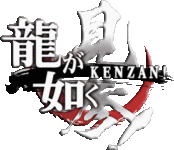
Ryū ga Gotoku Kenzan!
Available on: PlayStation 3
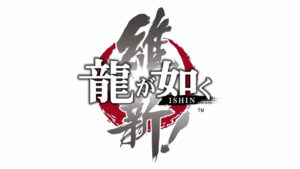
Ryū ga Gotoku Ishin!
Available on: Playstation 3 and PlayStation 4
Ryū ga Gotoku Kenzan! and Ishin! are Edo and Samurai era spin-offs from the main Yakuza series. Kenzan! focuses on the historical figure of Miyamoto Musashi and recounts parts of his life. This was the first game in the series where the main character’s faces were modeled in 3D on the voice actors playing the roles. However, several of the series’ staple character models and their associated voice actors are also incorporated into the game including Kiryu and Haruka.
Ishin! follows the life of another historical figure, Sakamoto Ryōma, during the chaotic years at the end of the Tokugawa shogunate in the middle of the nineteenth century. Both games mirror their mainline brethren with a deep central story and plenty of side stories to explore, and each incorporates swordplay into the combat systems. However, as these games have never been released in the west, playing these imports is a daunting task for all but the most dedicated Yakuza fan.
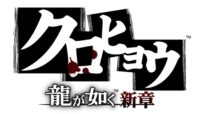
Kurohyō: Ryū ga Gotoku Shinshō
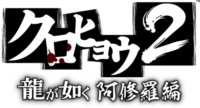
Kurohyō 2: Ryū ga Gotoku Ashura hen
Available on: PlayStation Portable
Kurohyō: Ryū ga Gotoku Shinshō is a PlayStation Portable exclusive side story, focusing on Tatsuya Ukyo, an aimless youth residing in Kamurocho. After joining a local gang, Tetsuya learns that there is a large sum of money being held by a loan shark, and his crew decides it is ripe for the taking. However, the consequences of this action lead Tetsuya into killing a man. The gang gives Tetsuya an ultimatum, participate in the underground fighting ring or be arrested and take the fall. The game’s sequel takes place two years after the incident, with Tetsuya seeking allies and getting trapped in the underground fighting ring, Ashura.
Combat is more 1-on-1 focused, though it is not like a beat’em up. Borrowing combat elements from the main series such as Heat actions, Tetsuya can brawl his way through random encounters on the streets of Kamurocho! There is more of a focus on breaking limbs, and damaging the enemy to the point of crippling them, rather than like the main series, where Kiryu just beats down every enemy in front of him. Since these are side stories, players can easily start with Shinsho and then move their way into playing Ashura. Neither of the games is officially in English, though a fan translation exists for the first game.
We hope our look into the past decade-and-a-half of Yakuza history has been informative and given you an idea of the different places to jump into these gripping crime tales! What was your favorite Yakuza game? Would you recommend a specific starting point? Join the conversation by dropping a comment below!
























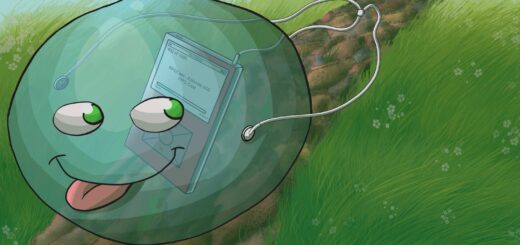
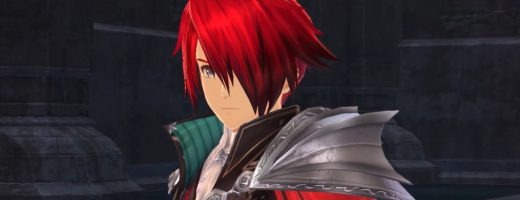




Recent Comments